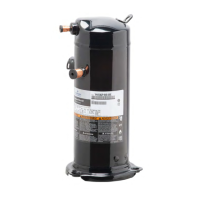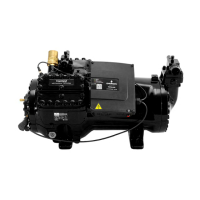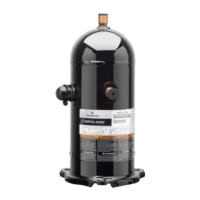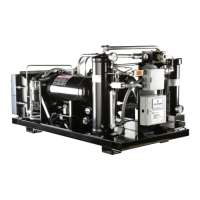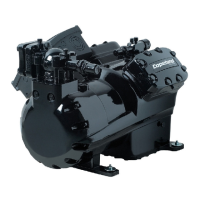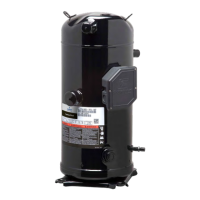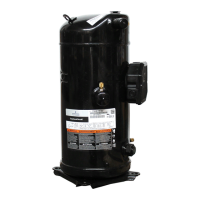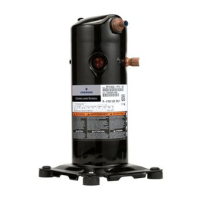AGL_HA_ST_Discus_A2L_A1_EN_Rev00 31
One disadvantage of POE is that it is far more hygroscopic than mineral oil – see Figure 30. Only
brief exposure to ambient air is needed for POE to absorb sufficient moisture to make it unacceptable
for use in a refrigeration system. Since POE holds moisture more readily than mineral oil it is more
difficult to remove it through the use of vacuum. The compressors supplied by Emerson contain oil
with low moisture content, which may rise during the system assembling process. Therefore, it is
recommended that a properly sized filter-drier be installed in all POE systems. This will maintain the
moisture level in the oil to less than 50 ppm. If oil is charged into a system, it is recommended to use
POE with a moisture content no higher than 50 ppm.
Figure 30: Absorption of moisture in ester oil in comparison to mineral oil in ppm by weight at 25 °C and 50 %
relative humidity (h= hours)
If the moisture content of the oil in a refrigeration system reaches unacceptably high levels, corrosion
and copper plating may occur. The system should be evacuated down to 3 mbar or lower. If there is
uncertainty as to the moisture content in the system, an oil sample should be taken and tested for
moisture. Sight glass/moisture indicators currently available can be used with the HFC refrigerants
and lubricants; however, the moisture indicator will just show the moisture content of the refrigerant.
The actual moisture level of POE would be higher than the sight glass indicates. This is due to the
high hygroscopicity of the POE oil. To determine the actual moisture content of the lubricant, samples
have to be taken from the system and analysed.
6.8 Oil additives
Although Emerson cannot comment on any specific product, from our own testing and past
experience, we do not recommend the use of any additive to reduce compressor bearing losses or
for any other purpose. Furthermore, the long-term chemical stability of any additive in the presence
of refrigerant, low and high temperatures, and materials commonly found in refrigeration systems is
complex and difficult to evaluate without rigorously controlled chemical laboratory testing. The use
of additives without adequate testing may result in malfunction or premature failure of components
in the system and, in specific cases, in voiding the warranty on the component.
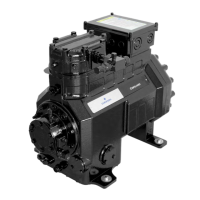
